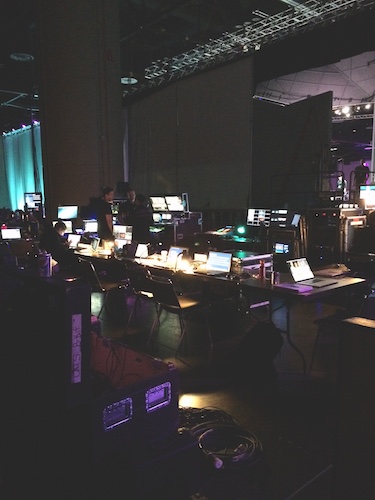 I’ve never been away from this blog for so long! One week turned into two weeks, which turned into two months. And here we are.
I’ve never been away from this blog for so long! One week turned into two weeks, which turned into two months. And here we are.Sigh.
It’s not that I feel guilty. Rather, I feel like I’m overflowing with things to say! I have a running list of stories I want to tell and little snippets of ideas dying to be stitched together.
Let me start by recapping where in the world I’ve been (the picture is a clue). For the past four summers, I’ve partnered with the amazing team at Iacono Productions to help Origami Owl Jewelry produce their summer convention. My job is to write the script for the two-day show. I write speeches, product introductions, program updates, skits, and video treatments. I also collaborate and brainstorm with the production team on any number of things. It’s my job to put the show on paper, whatever that takes.
It takes a lot.
This is why I barely remember July. I think there was a holiday. I recall it rained once or twice. Mostly, I worked long hours. But I was with awesome people, so it was all good. The project wrapped the first week in August, which means I’ve had a few weeks to sleep (finally!) and sift through ideas.
The idea I can’t stop thinking about is the hidden link between utter chaos and seamless elegance.
Allow me to explain.
Pay No Attention to the Man Behind the Curtain
At a corporate show, there is a whole world backstage that the audience can’t see. There are approximately seven billion cords, along with dozens of big-ass monitors and giant boards with buttons that light up in all different colors. There are video people, audio people, graphics people, camera people, switcher people, lighting people, teleprompter people, stage managers, logistics people, technical supervisors, producers and assistants.
Oh, and me, the writer.
We all talk to each other over linked headsets. It’s called being on comms. I’m on comms to answer script questions, but mostly, I just listen to all of the discussions and technical cues. Every time something happens on stage, it takes a bunch of hidden people working in tandem to make it look right. For days, I hear things like this: “Stand by to roll IR-26. IR-26 go. Stand by to open mic 9. Open mic 9. Prepare to fade and settle.”
There is a constant chatter of cues. It gets hairy sometimes, too, with frequent emergencies bubbling up . . . oh my god, one of the graphics machines just went down! . . . we can’t find the person who needs to be mic’d to go on stage next! . . . no, we don’t have that flippin’ piece of music to play! . . .
If I’m not immediately needed, one of my favorite things to do is to go off comms in the midst of this chaos and walk front of house to be among the audience for a while.

It never ceases to amaze me how different everything looks from that angle. People move on and off stage effortlessly. Lights dim and brighten as if it’s the most natural thing in the world. Microphones are turned on and off as people come to stage and no one is ever the wiser.
The backstage guts are hidden. The chatter is muted. The chaos melts away. I see it the way the audience sees it. Obvious. Easy. Seamless.
Then I go back of house and get back on comms. The chaos meets my ear again, even as I see shots of the audience on the backstage monitors, grinning and enjoying the show, oblivious to the mild freak-out happening behind the curtain.
The two worlds could not be more different.
This year as I traipsed back and forth between the two worlds, I was thinking that it would be great if I could figure out how to metaphorically “get off comms” more often in my work. Just like the show, I’m producing my own product (content), but mostly I am stuck in the process behind that product: email chains, Basecamp threads, pages of notes and discovery documents, editorial calendars, and to-do lists. I spend the bulk of my time “calling cues” for content—talking about it and planning for it and dissecting it and putting it back together to make it feel seamless.
This is the reality of making something from scratch, and it’s not a bad reality. I adore taking notes and no one’s email is more organized than mine. However, often by the time the project is finished and the piece of content is out there in the world, I’m so over it that I don’t even see it. I forget to experience it the way the intended audience gets to experience it.
I’ve heard actors say that sometimes after a movie is finished, they don’t even see it.
I get it. It can be exhausting to stick around long enough to see the end product.
But what might be possible if we got to see our creative work from another perspective? If the chaos and process behind creating it got stripped away for a moment and we got to enjoy a pure experience of it? What would it feel like to be able to wander into our own audience for a while?
I don’t have the answer, but I’m taking this idea with me as I embark on my work this Fall. Yes, I’ll have more email chains and discovery documents and Basecamp threads. More cues to call.
But maybe I can be part of my own audience for a little bit, too.
(Thanks to Toby Brauer from Iacono for letting me use the audience picture!)

